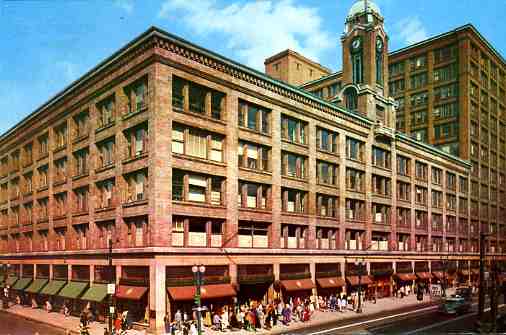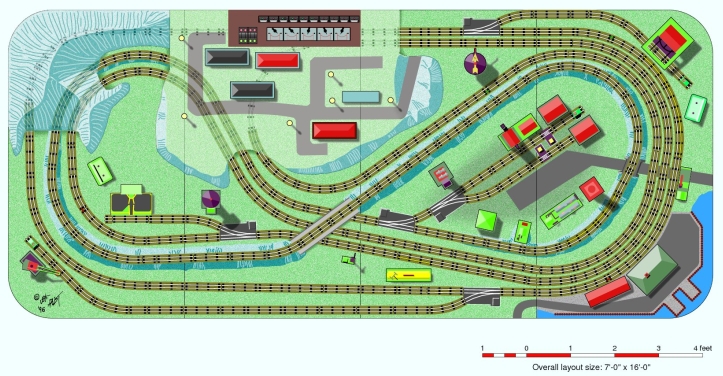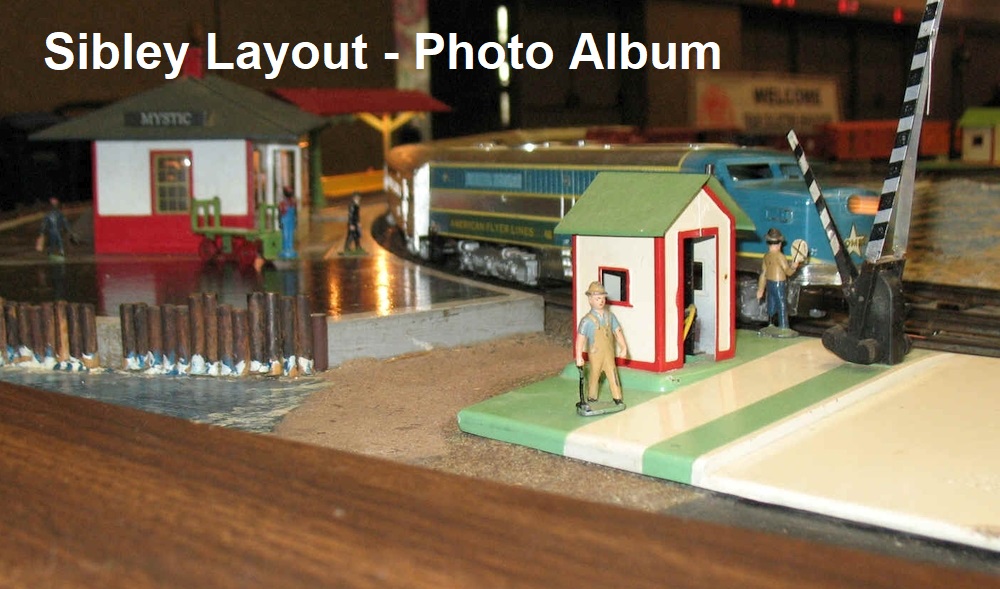Sibley's - Rochester, NY


Layout Introduction by Clay Buckage

 This layout is one of the few surviving display layouts built by
the Gilbert Display department, in this case by Frank Castiglione
and Art Mauzaka. It was originally preserved by Frank Ligocki, who
purchased it from Sibley's along with all its accessories and
rolling stock in 1953. This was all according to the Gilbert plan of
"self liquidating" displays. Frank kept the layout preserved
throughout the years, and the preservation of this layout continues
today in the hands of Clay Buckage. This layout is one of the few surviving display layouts built by
the Gilbert Display department, in this case by Frank Castiglione
and Art Mauzaka. It was originally preserved by Frank Ligocki, who
purchased it from Sibley's along with all its accessories and
rolling stock in 1953. This was all according to the Gilbert plan of
"self liquidating" displays. Frank kept the layout preserved
throughout the years, and the preservation of this layout continues
today in the hands of Clay Buckage. The track plan used for this layout was typical of a style of layout produced by Gilbert in the early 1950's. This layout was more formally known as the "No. 700 Product Display." Another example of the use of this layout plan was the studio layout used in the production of the Boys' Railroad Club television show. 1 The Sibley layout includes the often used harbor scene at one end as does the studio layout used in the production of the "Boys Railroad Club" television program that aired in the early 1950's. Clay says close examination of the scenes in the program show slight differences that seem to confirm that the Sibley layout was not used in the television program. One of the questions frequently asked about this layout is how the layout builders constructed the wide radius curves. In short, they used 7 foot long uncut sections of rail material that was fastened to ties that were spaced to match available rubber roadbed. If you look in the slide show above, you will see places where two metal ties come together, usually an indication of a rail joint, but there is no rail joint. Actually a bigger question is how they got the rubber roadbed fitted to the wide radius curves. The only thing I can think of is flexing either straight or curved roadbed to fit, depending on how wide the radius was. I do know that HO rubber roadbed was made in only 18 inch radius and was considered bendable to 15 inch radius. I have a copy of the blueprint for this layout design which details the radii of the various wide curves. Unfortunately it is not legible enough to post on the website yet though I am working on getting a better copy of it. In the meantime I am working on a hand corrected facsimile of it that shows the radii of the curves, which are surprising complicated. More information coming soon. Another thing about this layout design that is not well known is that it incorporated a loop of HO track. Gilbert stopped selling HO products beginning during the Korean war, from 1951- 1954, so in manycases the HO loop was removed by the stores when there was no HO to sell and the space was used to display other items. The Sibley layout was sold by the store in 1953 and by that time the HO loop had been removed. Sibley's apparently used the space to display some of the new Mini-Craft buildings introduced in 1952 as that is what we see on the layout as it exists today. To see what the HO track looked like in place on the Boys' Railroad Club studio layout, click here. It matches the style of HO track sold from 1940-1949. To see the HO loop on the slightly larger FAO Schwarz 1949 layout, click here. |

![]()
![]()
Track plans courtesy of Jeff Faust
For more information on the Sibley layout, there is an article which appeared in Classic Toy Trains which tells the complete story, but ends before Clay and Charlie purchased the layout. 2 There is also a brief write up on the layout while in the stewardship of Clay and Charlie Buckage, which appears in the Train Collector's Quarterly, complete with color photos of the layout on display. 3 In addition to the photo gallery on this site, there are also photos of the layout on the myflyertrains.net and the Gilbert Gallery websites. To see the photos, click on the links below.
See more photos of the Sibley Layout at the following locations:
Notes
1 See Articles in
S Gaugian Magazine for
Jan/Feb 1985 (p33), July 1984 (p29), and May 1991 (p19) for
references to this type of layout.
2
Flyer Survivor, by Jeff Faust, Classic Toy
Trains, May 1998, page 84.
3
A Gilbert Store Display Layout, by Charlie
and Clay Buckage, Train Collector's Quarterly, October 2007 (Vol.
53, No. 4), page 10.